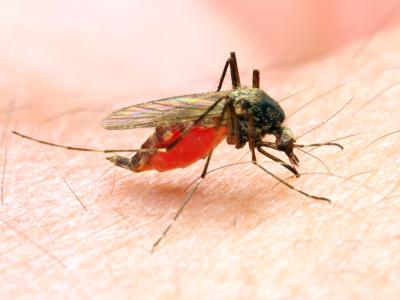Our weekly wrap-up of antimicrobial stewardship & antimicrobial resistance scans
Candidate antibiotic combo shows promise for resistant urinary infections
Venatorx Pharmaceuticals of Malvern, Pennsylvania, yesterday released promising data from a phase 3 trial of its investigational new drug for patients with complicated urinary tract infections (cUTIs).
The drug, cefepime-taniborbactam, combines a fourth-generation cephalosporin antibiotic with a beta-lactamase inhibitor and targets difficult-to-treat drug-resistant gram-negative bacteria, including carbapenem-resistant Enterobacterales and carbapenem-resistant Pseudomonas aeruginosa. It's been granted Qualified Infectious Disease Product and Fast Track designation by the US Food and Drug Administration (FDA).
In the randomized, double-blind phase 3 study, which included 661 patients, investigators found that cefepime-taniborbactam met the primary efficacy end point of statistical non-inferiority to meropenem in patients with cUTI, including acute pyelonephritis.
In the microbiologic intent-to-treat population at test of cure (TOC), composite microbiologic and clinical success occurred in 70% of patients treated with cefepime-taniborbactam and 58% of patients treated with meropenem (treatment difference, 11.9; 95% confidence interval [CI], 2.4 to 21.6). A prespecified superiority test demonstrated the statistical superiority of cefepime-taniborbactam for the composite end point at TOC.
Rates of treatment-emergent adverse events were 35.5% for cefepime-taniborbactam and 29.9% for meropenem, with serious events occurring in 2% and 1.8% of patients, respectively.
"These data demonstrate that cefepime-taniborbactam may represent a significant improvement over the standard of care and could support global health efforts to combat antibiotic-resistant infections," Venatorx President and CEO Christopher Burns, PhD, said in a company press release. "Cefepime-taniborbactam, if approved by the FDA, may offer a new treatment option for patients with infections caused by highly resistant bacteria, even those resistant to widely used carbapenem antibiotics."
Venatorx developed cefepime-taniborbactam with funding from the National Institutes of Health, the Department of Health and Human Services, the Biomedical Advanced Research and Development Authority, and Wellcome Trust. In 2020, the company announced an agreement with the Global Antibiotic Research and Development Partnership to accelerate development of and access to the drug for adult and pediatric populations.
The company says it plans to submit a New Drug Application to the FDA later this year.
Mar 10 Venatorx press release
Rising fluoroquinolone sales for food animals tied to resistant Salmonella
A review of data on fluoroquinolone sales for food-producing animals and isolates from retail meat samples found a link between rising fluoroquinolone sales and increased quinolone resistance in Salmonella, researchers reported today in the Journal of Global Antimicrobial Resistance.
In the study, researchers from Penn State and the Pennsylvania Department of Health analyzed FDA data on antimicrobial sales for food-producing animals from 2013 through 2018 and reviewed antibiotic susceptibility data from 4,138 nontyphoidal Salmonella (NTS) isolates from retail samples of chicken, ground turkey, ground beef, and pork chops. The samples were collected from 2009 through 2018 through the FDA's National Antimicrobial Resistance Monitoring System. The investigators used Pearson's correlation to examine the association.
After adjusting for the increase in beef and pork production, the researchers found that fluoroquinolone sales increased by 41.67% from 2013 to 2018, from 0.72 kilograms (kgs) per kg of meat production in 2013 to 1.02 in 2018. The prevalence of quinolone-resistant NTS from beef and pork samples increased from 0.62% in 2009 to 12.75% in 2018. The increase of quinolone-resistant isolates in retail meats since 2016 were mostly related to Salmonella Infantis and Salmonella Enteritidis.
The correlation between the annual percentage of quinolone-resistant NTS from beef and pork samples with the annual adjusted fluoroquinolones sales was 0.67 (n = 6, P = 0.1449).
NTS is a major cause of foodborne illness worldwide, and while most NTS infections are self-limiting, roughly 5% of infected people develop invasive infections, for which the quinolone antibiotic ciprofloxacin is a first-line treatment. Antibiotic-resistant NTS are associated with excess bloodstream infections, longer hospitalizations, higher healthcare costs, and increased mortality.
"Our results indicate a moderately positive correlation of the annual standardized fluoroquinolone sales with the annual prevalence of quinolone-resistant NTS in retail meats," the study authors write. "The results from our study emphasize the need for integrated surveillance to monitor trends in antimicrobial resistance and to detect emergence of clinically consequential pathogens in humans and food animals."
Mar 11 J Glob Antimicrob Resist study
Study: Young kids with simple pneumonia fare well without antibiotics
Originally published by CIDRAP News Mar 10
A study of children 3 years old or younger who were hospitalized for uncomplicated community-associated pneumonia (CAP) found that a significant proportion did well without a full course of antibiotics, researchers reported yesterday in Open Forum Infectious Diseases.
In the retrospective observational study, researchers from the University of Alabama at Birmingham analyzed data on previously healthy children ages 3 to 36 months who were treated at Children's of Alabama for uncomplicated CAP from September 2011 through December 2019. They compared outcomes in children treated with antibiotics—defined as treated for more than 2 days with an antibiotic or discharged home with an antibiotic prescription—versus those who received 2 days of antibiotics or less or were discharged home with no antibiotics.
The outcomes of interest were illness severity, length of hospital stay, and readmission after discharge.
A total of 322 children were included in the study, and 266 (83%) received more than 2 days of antibiotics or were discharged with antibiotics. Fifty-six children received 2 days or less of antibiotics and none at discharge, with 32 receiving no antibiotics at all. There were no statistically significant differences in sex, race, or ethnicity between groups. Similar proportions of patients in both groups required intensive care unit admission, and there were no statistically significant differences between the groups in median hospital length or 30-day readmissions.
The proportion of patients treated with antibiotics decreased from 88% in the early part of the study period (2011 through 2013) to 66% from 2017 through 2019.
"It appears that a substantial proportion of previously healthy children less than 3 years of age hospitalized with uncomplicated CAP will do well without antibiotic treatment," they concluded. "This conclusion is also relevant for the outpatient setting, where most young children with community-acquired pneumonia are managed. Better tools for identifying those that require antibiotics will make it possible to achieve a significant advance in antibiotic stewardship."
Mar 9 Open Forum Infect Dis abstract
Meta-analysis documents resistance in COVID-19 co-infections
Originally published by CIDRAP News Mar 8
More than a quarter of bacterial samples from patients with COVID-19 and bacterial co-infection during the first 18 months of the pandemic were resistant to antimicrobials, according to a review and meta-analysis published yesterday in Antimicrobial Resistance and Infection Control.
Of the 38 studies pertaining to patients with confirmed SARS-CoV-2 and co-infections caused by resistant organisms that were included in the review, a total of 1,959 unique isolates were identified, and 569 (29%) were resistant organisms. Co-infection with resistant bacterial or fungal infections ranged from 0.2% to 100% across studies, and the pooled prevalence of co-infection with a resistant bacterial or fungal infection was 24% (95% CI, 8% to 40%) and 0.3% (95% CI, 0.1% to 0.6%), respectively.
Among multidrug-resistant organisms identified, methicillin-resistant Staphylococcus aureus, carbapenem-resistant Acinetobacter baumannii, Klebsiella pneumoniae, P aeruginosa, and multidrug-resistant Candida auris were most commonly reported. Stratified analyses found higher proportions of antimicrobial resistance (AMR) outside of Europe and in intensive care units, though these results were not statistically significant.
The study authors note that the findings are limited by the variation in patient populations within the studies, along with the lack of a standardized definition of AMR and an inability to distinguish between isolates from true co-infections and those involving colonization and contamination. They suggest the findings could represent a small subset of the true burden of resistant co-infections.
"Despite the large body of literature describing the potential effects of the COVID-19 pandemic on AMR, this is the first study to summarize data surrounding AMR which may have major implications for current and future antimicrobial stewardship as well highlighting gaps in methods of organism identification and reporting of resistance," they wrote. "However, with very few reports and poor-quality data, further research is warranted to better understand the landscape of AMR during COVID-19."
Mar 7 Antimicrob Resist Infect Control study
Joint European report calls for more action on antimicrobial resistance
Originally published by CIDRAP News Mar 7
A new joint report on AMR in European Union/European Economic Activity (EU/EEA) countries is calling for concerted action to address the problem from a One Health perspective.
The report from the European Centre for Disease Prevention and Control (ECDC), the European Food Safety Agency (EFSA), the European Medicines Agency (EMA), and the Organisation for Economic Co-operation and Development (OECD) notes that there have been encouraging trends in human and animal antibiotic use across Europe over the past decade. From 2011 through 2020, antibiotic consumption in humans in EU/EEA countries fell by 23%, while animal antibiotic consumption fell by 43% in 25 European nations with consistent reporting.
In addition, EU/EEA countries have made major strides in developing and implementing national AMR action plans.
Resistance to commonly used antibiotics in bacteria from food-producing animals, however, remains high (>20% to 50%) or very high (>50% to 70%), with significant variation across the continent, while resistance to critically important antibiotics in healthcare-associated pathogens continues to climb. And the declines in human and animal antibiotic use vary widely as well. In addition, the evidence that AMR can spread between humans, animals, and the environment continues to mount, and significant gaps remain in implementation of national AMR action plans.
"AMR cannot be contained within borders or regions, underlining the need for concerted action throughout the EU/EEA," the report states.
To continue making progress, the report urges EU/EEA countries to prioritize monitoring and evaluation of national action plan implementation, integrate and expand surveillance of drug-resistant bacteria in humans, animals, and the environment, and invest in antimicrobial stewardship and infection prevention and control programs.
The report also recommends that a forthcoming EU policy initiative to boost implementation of the EU One Health Action Plan against AMR should promote innovative economic models and incentives for new antibiotics, diagnostics, and vaccines; target antibiotic consumption in nursing homes; and establish a system to promote implementation of best practices to tackle AMR.
Mar 7 ECDC/EFSA/EMA/OECD joint report
Canadian hospital surveys show rise, stabilization of antimicrobial use
Originally published by CIDRAP News Mar 7
Point-prevalence surveys of sentinel acute-care hospitals in Canada suggest that antimicrobial use over a 15-year period stabilized following a sharp increase, Canadian researchers reported today in Infection Control & Hospital Epidemiology.
The surveys were conducted by the Canadian Nosocomial Infection Surveillance Program in 2002, 2009, and 2017 during a 24-hour period in February of each year to identify trends in antimicrobial use in acute care. Patients were eligible if they were admitted for 48 hours or more or if they had been admitted to the hospital within a month. Twenty-eight to 47 hospitals participated in each survey.
In 2002, 2,460 of 6,747 patients (36.5%) at surveyed hospitals received one or more antimicrobials. In 2009, the proportion of patients receiving one or more antimicrobial climbed to 3,566 of 8,902 patients (40.1%). In 2017, 3,936 of 9,929 patients (39.6%) received one or more antimicrobial. Overall, the prevalence of antimicrobial use increased 9.9% from 2002 to 2009 but remained stable (a 1.1% decrease) from 2009 to 2017. In a secondary analysis of the 18 hospitals that participated in all three surveys, the prevalence of antimicrobial use was similar to the primary analysis.
Among patients who received one or more antimicrobials, penicillin use increased 36.8% from 2002 to 2017 and third-generation cephalosporin use increased from 13.9% to 18.1%. Over the same period, fluoroquinolone use declined by 36.5% and clindamycin use decreased by 62.5%. Carbapenem use increased by 57.6% from 2002 to 2009, then by 4.8% from 2009 to 2017.
The authors say the stabilization of antimicrobial use coincided with an increased focus on antimicrobial stewardship in Canadian hospitals since the mid-2000s.
"Further studies are needed to examine the appropriateness of antimicrobial use, as part of a coordinated approach to prevent the emergence and spread of antimicrobial resistance," the authors write.
Mar 7 Infect Control Hosp Epidemiol study











